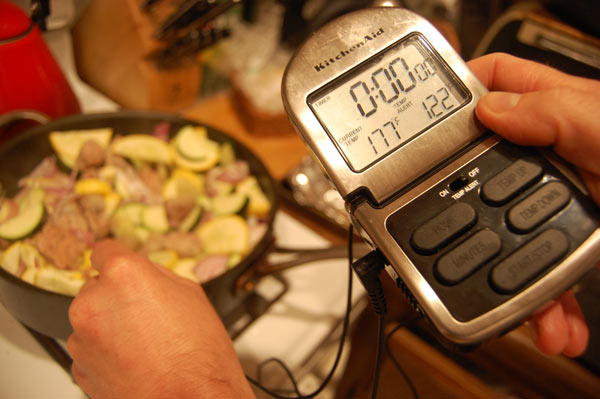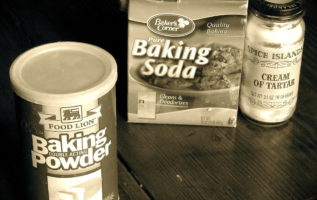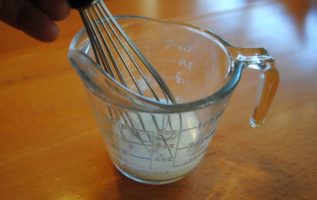
(Updated with latest USDA info on pork)
Ask any chef to pick their favorite tool in the kitchen and there’s a good chance he or she will lovingly look toward their biggest knife. But that favorite kitchen tool and the most important one are probably quite different.
That’s because the most important tool in the kitchen, at least when it comes to your health and safety, is one that many folks don’t even have: a cooking thermometer.
According to the Centers for Disease Control and Prevention, tens of millions of Americans become ill due to foodborne pathogens every year. And we’re not just talking about an upset stomach here; thousands of people die each year from them, the CDC says.
If you routinely make food for an elderly person, a child or a person with a weakened immune system, it’s even more vital to be sure your foods are as safe as possible for consumption.
Two of the biggest factors contributing to foodborne illnesses are cross-contamination and not cooking meats, poultry and fish to a safe temperature.
The first can be controlled by thoroughly cleaning and sanitizing work surfaces and tools that have touched raw meat, poultry and fish. The second is where the thermometer comes in.
Oftentimes it’s difficult to know when exactly the meat is “done,” and this can be even more problematic if, for example, you’re attempting to cook a steak to a certain degree of doneness, such as medium-rare.
The thermometer can save you. These handy devices are widely available in two popular forms: One with a dial gauge, and another with a digital one that requires batteries. I prefer the digital version because the tally comes so much quicker, usually in a few seconds. Those dial versions, while called “instant-read” thermometers, can be anything but instant. And when you’re crouched over an oven with a prong in the chicken, all that heat from the oven is going bye-bye.
Digital thermometers can easily be had for $15 or less, and are available at most retailers or online at sites like Amazon.com. If you want something fancier, there are versions available that alert you when a certain temperature is reached, such as 145 degrees for a medium-rare steak.
Each thermometer works by being inserted into the food that you want to test until the readout stabilizes. When using, make sure you insert the probe into the thickest part of the meat, and be careful to avoid hitting a bone, which can register a higher temperature than the surrounding meat.
Before I outline cooking temperatures for specific meats, I should mention a temperature range most often associated with danger: 40 degrees to 140 degrees. Known as the “danger zone,” it is between these temperatures that bacteria grow most rapidly, according to the USDA. In fact, those little buggers can double in as little as 20 minutes between those temperatures, the USDA says.
Additionally, “that’s why the Meat and Poultry Hotline advises consumers to never leave food out of refrigeration over 2 hours,” the USDA says. “If the temperature is above 90 °F, food should not be left out more than 1 hour.” The number to that free hotline, by the way, is 888-674-6854.
Now that we’ve got that covered, here are the USDA’s recommended minimum cooking temperatures:
| Food | °F |
|---|---|
| Ground Meat & Meat Mixtures | |
| Beef, Pork, Veal, Lamb | 160 |
| Turkey, Chicken | 165 |
| Fresh Beef, Veal, Lamb | |
| Medium Rare | 145 |
| Medium | 160 |
| Well Done | 170 |
| Poultry | |
| Chicken & Turkey, whole | 165 |
| Poultry breasts, roast | 165 |
| Poultry thighs, wings | 165 |
| Duck & Goose | 165 |
| Stuffing (cooked alone or in bird) | 165 |
| Fresh Pork | 145* |
| Ham | |
| Fresh (raw) | 160 |
| Pre-cooked (to reheat) | 140 |
| Eggs & Egg Dishes | |
| Eggs | Cook until yolk & white are firm |
| Egg dishes | 160 |
| Leftovers & Casseroles | 165 |
Missing from this particular list is fish (including shellfish). The USDA’s recommended minimum cooking temperature for those wonderful delights from the water are 145 degrees. You might also notice there’s no listing for rare beef steak. If you like really like yours “bloody,” as they say, cook until the minimum internal temperature reaches 135 degrees, instructs the Culinary Institute of America’s “The Professional Chef” textbook. Just be aware that at that temperature, it is still technically in the “danger zone.”
*UPDATE, 6/1/11: Since first writing this post, the USDA has revised its recommended internal cooking temperature for pork. The agency now says cuts of pork are safe at 145 degrees, at which point there is still some pink in the middle. This temp is 15 degrees lower than the previous recommended one of 160 degrees, and will yield a juicier cut of meat. (Don’t forget to let all meats rest a few minutes before diving in so the juices can reabsorb.) And note, this only counts for whole cuts; ground pork still must be cooked to at least 160.
(If you’re craving even more info on the subject of cooking temps, check out the USDA’s “Is it Done Yet?” website.)
Now that you’re armed with this most important of culinary knowledge, go arm yourself with a kitchen thermometer and, most importantly, enjoy putting it to use.
Source: iwanttocook.com (defunct blog)





























